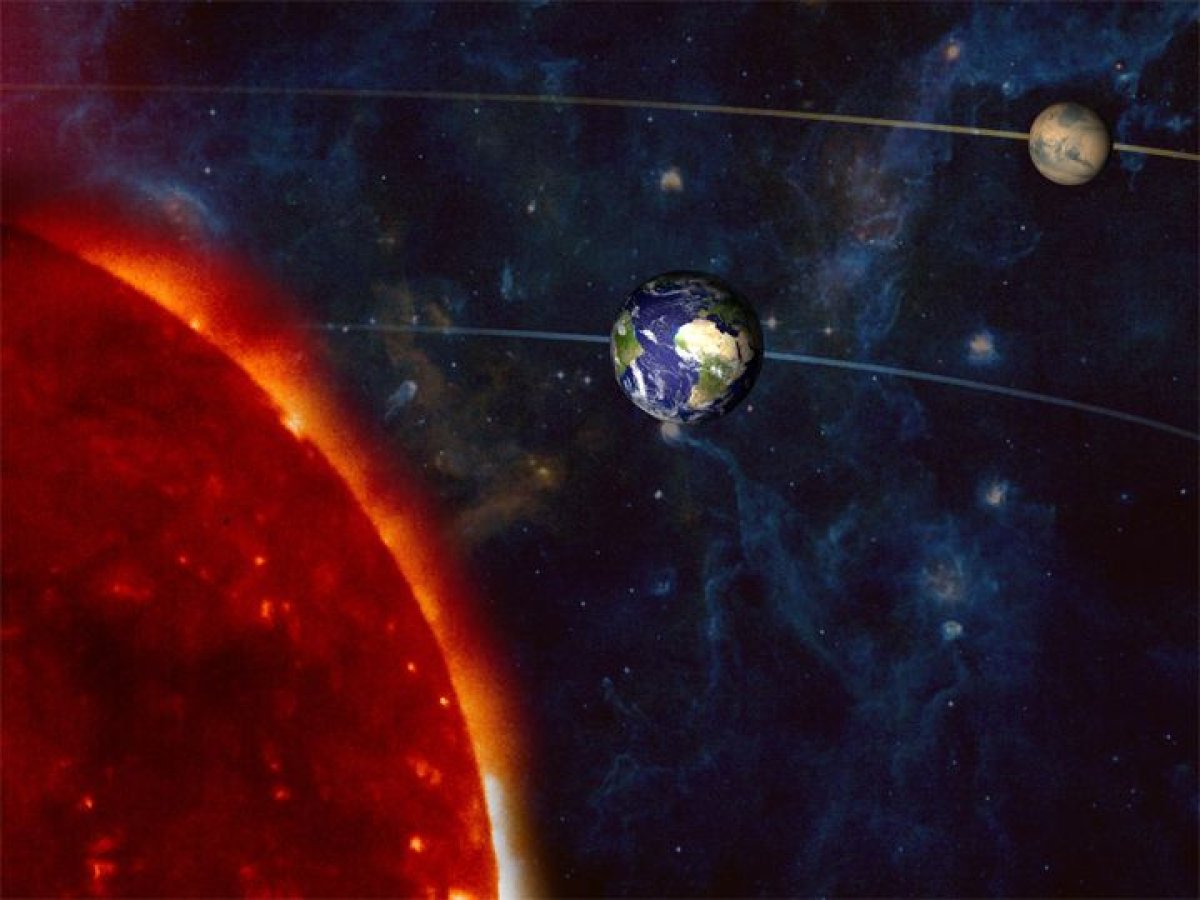Stargazers and astronomers are in for a treat next month as Mars will make its closest approach to Earth in 15 years. Around this time the Red Planet will appear particularly large and bright, so much so, that it will be easily visible to the naked eye, according to Dean Regas, an astronomer from the Cincinnati Observatory.
"In fact, you will be hard pressed to miss it," Regas told Newsweek. "To the naked eye, it will look like a suspiciously bright, steadily-shining, orange star. Only Venus is a brighter star-like object (and it will be visible in the western sky at the same time)."
The close approach—which at its peak on July 31 will bring the two planets within 35.8 million miles of each other—can be explained by the particular characteristics of Earth and Mars's orbits. Earth, as we all know, takes 365 days to orbit the Sun. Mars on the other hand, being further away, takes 687 days.
This means that Earth makes two trips around the Sun in about the same time it takes for Mars to make one trip. Sometimes the two planets will be on opposite sides of the Sun, but roughly every 26 months, the Earth will pass its neighbor in what's known as a Mars Close Approach.
This also coincides with Mars being in "opposition," which is when the Red Planet and the Sun appear on opposite sides of the Earth, according to NASA.
"During opposition, Mars and the Sun are on directly opposite sides of Earth," the space agency's Mars Exploration website says. "From our perspective on our spinning world, Mars rises in the east just as the Sun sets in the west. Then, after staying up in the sky the entire night, Mars sets in the west just as the Sun rises in the east. Since Mars and the Sun appear on opposite sides of the sky, we say that Mars is in opposition."
Now, if Earth and Mars followed perfectly circular orbits, then "opposition" would also be the closest that the two planets ever came. However, the orbits of both planets are slightly elliptical, or oval-shaped, meaning that at some points, they will be closer to the Sun than others. The point at which they are closest to the star is known as the perihelion.
While Mars oppositions happen every 26 months, every 15 or 17 years they also coincide with the planet's perihelion. When these two events occur at the same time, it's known as a "perihelic opposition" and this is exactly what will happen next month, meaning Earth and Mars will be closer together than they would be during a normal opposition.
Perihelic oppositions should always bring the planets as close as they can possibly come to each other—if they had perfectly stable orbits that is.
"But once again, nature throws in a few complications," according to NASA. "Gravitational tugging by the other planets constantly changes the shape of our orbits a little bit. Giant Jupiter especially influences the orbit of Mars. Also, the orbits of Earth and Mars don't lie in quite the same plane. The paths the planets take around the sun are slightly tilted with respect to each other."

The result of this is that some perihelic oppositions bring the two planets closer together than others. This is why the distance between the planets during this year's event will be slightly larger than the same occurence in 2003, when they came within 34.6 million miles of each other—the closest approach for 60,000 years
So where are the best places to see Mars next month?
"Mars will be visible from nearly everywhere on Earth in July after sunset (only folks in the far north like Alaska, northern Canada, Greenland and Iceland won't be able to see it since it won't clear the southern horizon), but all of the mainland U.S., most of Canada, Europe and Asia, all of Africa, Central and South America, Australia, and Antarctica can see Mars in July," Regas said.
While Mars's close approach will peak on July 31, it will be actually be in opposition a few days earlier on July 27, and will appear brightest from July 27-30. But this won't be the only good time to view the Red Planet.
"Although Mars is closest to Earth at the end of July, you will be able to spot it every night for several months," he adds. "It will slowly get dimmer as the Earth moves away from it, but still it [will] shine brightly."
Uncommon Knowledge
Newsweek is committed to challenging conventional wisdom and finding connections in the search for common ground.
Newsweek is committed to challenging conventional wisdom and finding connections in the search for common ground.
About the writer
Aristos is a Newsweek science reporter with the London, U.K., bureau. He reports on science and health topics, including; animal, ... Read more
To read how Newsweek uses AI as a newsroom tool, Click here.








